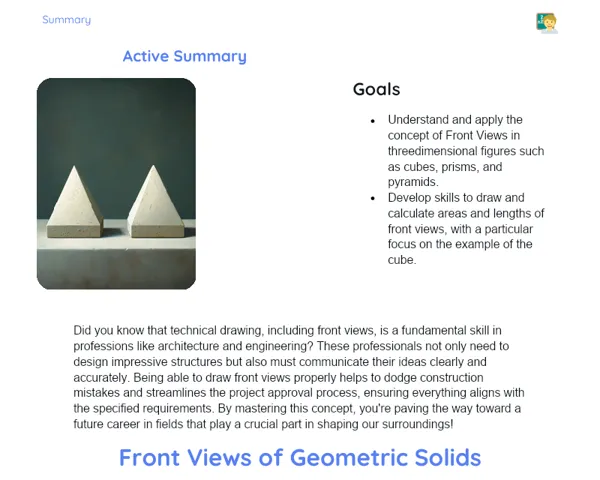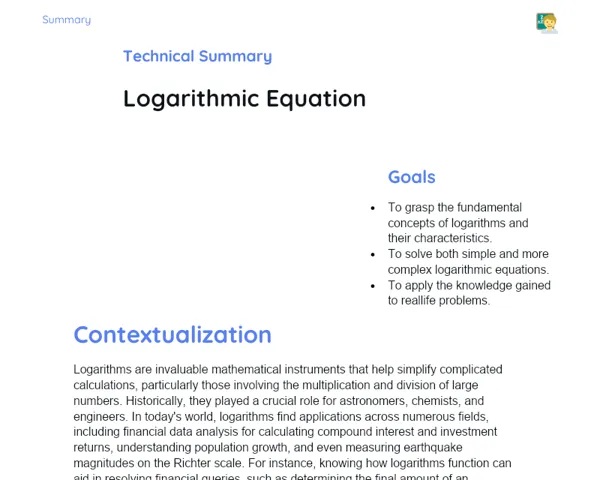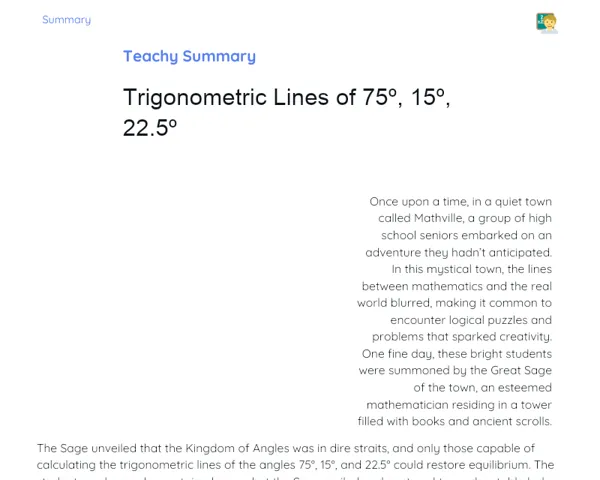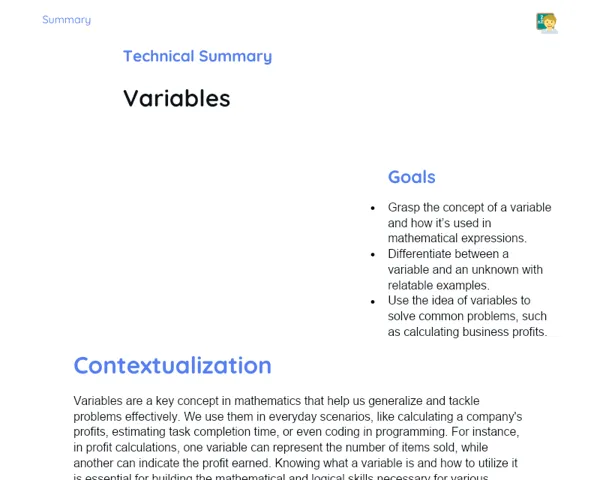Socioemotional Summary Conclusion
Goals
1. Identify vertical angles and grasp that they are always equal.
2. Tackle problems related to vertical angles using algebraic expressions, like 2x and x + 40°.
Contextualization
🤔 Have you ever noticed how angles shape our everyday lives? From intersections on the road, the design of buildings, to even the scissors you use, vertical angles are fundamental in ensuring accuracy and beauty in our constructions. Grasping this concept goes beyond just numbers; it equips you to navigate everyday challenges more effectively! 🚀
Exercising Your Knowledge
Definition of Vertical Angles
Two angles are termed vertical when the sides of one angle extend from the sides of the other. They occur where two lines intersect. This definition is crucial for recognising these angles in both daily life and mathematical scenarios.
-
Intersection of Lines: When two lines cross each other, two pairs of vertical angles are formed.
-
Extension of Sides: The sides of one angle continue from the sides of the opposite angle.
-
Visualization: Picture a cross (+). The angles formed on opposite sides of this cross represent vertical angles.
Key Property of Vertical Angles
Vertical angles are consistently equal. This key property equips us with a handy tool for addressing various mathematical challenges, because knowing the measure of one angle instantly informs us of its vertical counterpart.
-
Equality of Angles: If two angles are vertical, their measures must be equal because of the symmetry of the lines that create them.
-
Mathematical Proof: By naming the lines that create these angles, we can algebraically demonstrate their equality.
-
Real-World Applications: This property is useful for determining angle measures in geometry, engineering, and architectural problems.
Problem Solving with Vertical Angles
When solving problems that involve vertical angles, we often need to work with algebraic expressions. For instance, if one angle measures 2x while its opposite measures x + 40°, we can create an equation to find the angle measures.
-
Algebraic Equations: Knowing how to set up and solve equations is an essential skill for working with vertical angles.
-
Real-Life Examples: Suppose one line creates an angle of 2x with another, and its opposite is x + 40°; we solve the equation 2x = x + 40° to find the value of x.
-
Critical Thinking: It's important to develop the ability to critically analyse problems and identify the best methods for solving them.
Key Terms
-
Vertical Angles: Angles formed where two lines intersect, with one angle's sides extending from the other’s.
-
Equality of Angles: The property stating that vertical angles have equal measures.
-
Algebraic Expressions: Mathematical terms we use to solve problems with vertical angles, like 2x and x + 40°.
For Reflection
-
🎨 How did you manage your emotions while solving problems related to vertical angles? Were there times you felt frustrated or satisfied? How did you deal with these feelings?
-
🧐 In what other aspects of your life could you apply the property of vertical angles and your problem-solving skills? Think about everyday scenarios.
-
🌱 How can self-awareness and self-regulation help you enhance your math skills and overall emotional health? Reflect on instances when these abilities were beneficial in the classroom.
Important Conclusions
-
Vertical angles occur where two lines intersect, with their sides extending from one another.
-
The main characteristic of vertical angles is their equality, which simplifies many geometry problems.
-
Solving problems involving vertical angles often requires the use of algebraic expressions, such as equations like 2x = x + 40°.
-
Self-awareness and emotional regulation are vital for managing the emotional hurdles that may arise during problem solving.
Impacts on Society
Understanding vertical angles is crucial in fields like engineering, architecture, and even in our everyday lives—like when evaluating road intersections. This knowledge is instrumental in building our surroundings, ensuring the structures we create are safe and precise. Additionally, mastering these concepts helps students cultivate critical problem-solving abilities that are highly valued in a range of careers.
On an emotional level, the ability to navigate problems involving vertical angles can significantly boost a student’s confidence in their math skills. Successfully overcoming challenges fosters a sense of accomplishment and curbs anxiety. Furthermore, learning to manage emotions while solving problems equips students with resilience, preparing them to tackle challenges in their academic and personal lives.
Dealing with Emotions
Let's engage in a socio-emotional reflection exercise using the RULER method. Take a moment of quiet at home to think about a particularly tough math problem you cracked. First, recognise the emotions you experienced during that process (frustration, anxiety, joy, relief). Next, understand what triggered these emotions (the challenge of the problem, pressure to perform, the happiness of finding a solution). Name each emotion appropriately. Then, express your feelings by writing them down or sharing them with someone you trust. Finally, regulate your emotions by coming up with strategies to maintain calm and focus in future situations, such as practicing breathing exercises or taking breaks to relax.
Study Tips
-
⚡ Regular practice: By tackling a variety of problems involving vertical angles, you strengthen your understanding and mathematical skills.
-
🖌️ Utilize visual aids: Diagrams and drawings aid in visualising vertical angles, making it simpler to comprehend and solve problems.
-
🤝 Study in groups: Collaborate with classmates to share insights and solutions. Teamwork can introduce fresh perspectives and enhance learning.



